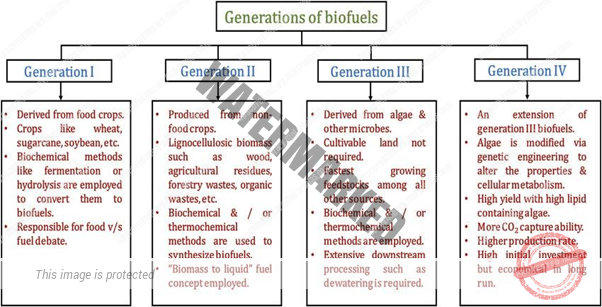- WHY BIOMASS IS A SUSTAINABLE ENERGY FOR FUTURE?
- BIOFUEL
UNIT 3 – RESOURCES AND ITS UTILIZATION – PART 17
WHY BIOMASS IS A SUSTAINABLE ENERGY FOR FUTURE?
The biomass is considered as a sustainable energy source because of abundancy and availability of biomass in comparison to dwindling in petroleum prices, depletion of fossil fuel reserves. Biomass potential of waste to energy – Agricultural biomass includes the broad range of the importantly wasted energy source.
After China, India Is the World’s Biggest Producer Of Paddy. India now produces 98 million tons of paddy with roughly 130 million tons of straw of which only nearly half is used for fodder. Beside this Agro-residues from the processing of Maize, Cotton, Millets, Pulse, Sunflower and Other Stalks, Bull Rushes, Groundnut Shells, Coconut Trash, etc., all produce good Bio Fuels.
- Environmental advantages provided by the modern biomass energy. It Decrease Air Pollution and Diminish Atmospheric CO2 Accumulation.
- BIOENERGY SUSTAINABILITY – Harvesting of forest remains may result in the buildup of CO2 in the atmosphere. Through increased use of forest residues via thinning and sustainable management strategies, forest growth can be greater, and fires also could be prevented, thus reducing overall CO2 emissions.
- Energy crops could also contribute to emission reductions if they were cultivated sustainably on waste or surplus land.
- They also have high energy yield therefore Enhancement of energy security and diversity of energy supply.
- Employment generation and rural development, restoration of degraded lands as a result of plantation and possibility of the increase in biodiversity.
BIOFUELS
The fuel (liquid, solid or gas) that has its origin from biomass is termed as ‘Biofuel’. The chemical properties of biofuels are very different from those of petroleum due to its oxygen levels of 10–45%. The biofuel is more associated with Energy Security, The Environment, Trading, And Socioeconomic issues related to the rural sector as biomass are more abundant and available in those regions.
TYPES OF BIOFUELS
Biofuels are broadly divided as Primary and Secondary Biofuels. The major biofuels that are used in an unprocessed form is known as Primary Biofuel. This is mainly used directly for heating, cooking, or electricity production The fuel wood, wood chips, and pellets are some common examples of primary biofuel. The secondary biofuels are generated by processing of Plants/Crops Biomass E.G. Ethanol, Biodiesel, DME, etc. that can be used in vehicles and various industrial processes. The secondary biofuels are further classified into First, Second, Third and Fourth generation biofuels based on raw material and technology used for their production.
THE FIRST-GENERATION biofuels refer to the fuels that have been originated from sources like Starch, Sugar, Animal Fats And Vegetable Oil.
THE SECOND-GENERATION biofuels use biomass to liquid technology including Cellulosic Biofuels, Biohydrogen, Bioethanol, etc. from lingo cellulosic.
The feedstock for THIRD GENERATION of biodiesel is algae.
The FOURTH GENERATION biofuels are derived from the bioconversion of living organisms (microorganisms and plants) using biotechnological tools.

